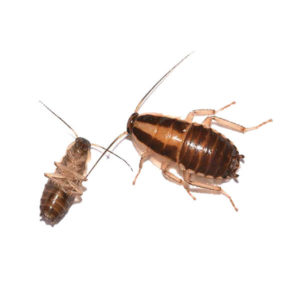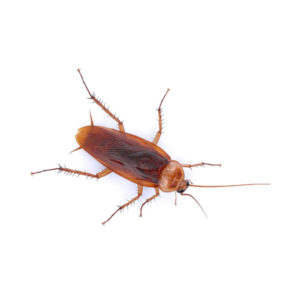Brown-Banded Cockroaches in Eastern Tennessee
The name “brown-banded” cockroach comes from the pronounced bands of color across the wings of adults and bodies of nymphs. In North America, the brown-banded cockroach is thought to be present in most states and lives in buildings that maintain relatively high temperatures. This cockroach is similar to the German cockroach with its small size and body shape but can be distinguished by its lack of two dark stripes.
Both brown-banded and German cockroaches are obligatory domestic roaches, which means they do not live outside and rely solely on conditions created in our homes and buildings for survival. The brown-banded cockroach is sometimes referred to as the “furniture cockroach” because it is distributed evenly throughout households, including non-food locations, such as bedrooms, under chairs and tables, and behind pictures and other objects on walls.
Brown-Banded Cockroach Habitat
Brown-banded cockroaches prefer warmth and tend to be found up and away from the floor in closets or in heat-generating appliances. They are good climbers and can be active at night and during the day. Females seek out warm, dark places where they can attach their yellowish-brown egg capsules, and prefer walls, ceilings, tables, bedding, or furniture. They feed on a variety of materials including human food, starches, dyes, glue, books, stamps, and clothing.
Brown-Banded Cockroach Behaviors, Threats, or Dangers
Brown-banded cockroaches are not aggressive and do not bite. These roaches reproduce at an alarming rate and one female can produce up to 600 young in her lifetime. Brown-banded cockroaches are known to spread at least 33 different kinds of bacteria, making them a concern for any homeowner. Foraging cockroaches can be vectors of disease, depositing germs or bacteria in areas they inhabit and causing asthma attacks in some people sensitive to cockroach allergens. E. coli and Salmonella are both commonly spread by brown-banded cockroaches and can cause gastroenteritis and diarrhea.
If you suspect a brown-banded cockroach infestation, contact a professional cockroach exterminator for help.
Need help with Brown-Banded cockroaches?
We'll call you! Leave your information below.



